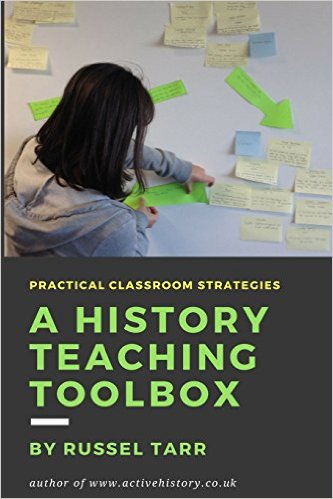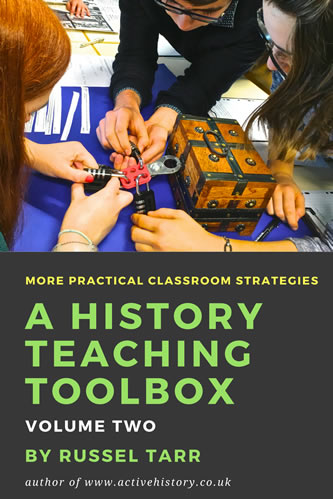Speech-writing task: a reply to the defenders of Apartheid “Watch the following three interviews with people defending the policy of apartheid. For each one, make notes on their essential arguments. Then, use these to help you produce a speech which will (a) summarise the arguments that have been put forward to defend apartheid by its…
Month: December 2015
Factual Test: The anti-apartheid resistance movement | Teacher answer sheet
Factual Test: The anti-apartheid resistance movement | Teacher answer sheet A detailed factual test in the form of a ‘fill the gaps’ exercise. When completed and corrected, it forms a useful revision aid in itself. Part of the complete scheme of work to support the IBDP History “Rights and Protest” unit on Apartheid South Africa.
IB History – The development of the anti-Apartheid resistance movement
The development of the anti-Apartheid resistance movement The tasks in this worksheet accompany the teacher led multimedia lecture and decision-making exercise at ActiveHistory (above). Both the lecture, and this worksheet, will take up substantially more than one lesson. Therefore, a good strategy is to (a) Complete Task 1 before the start of the lecture; (b)…
Apartheid – Multimedia Teacher-led lecture and decision-making exercise
Multimedia Teacher-led lecture and decision-making exercise This detailed multimedia presentation guides students through the development of the anti-Apartheid resistance movement. Through a series of stimulus images, written sources and video clips, students are guided through a series of decision points which reflect the issues which split the resistance movement into different groups and factions including…
Who was the most interesting Roman Emperor of all time?
Who was the most interesting Roman Emperor of all time? – a classroom debate In this activity, students research different emperors. They can then present their findings in a whole host of ways: through a balloon debate (my favoured approach!), a biopoem, a diamond diagram, and many others which are suggested within the worksheet. Part…
IB/A-Level: Christmas in Stalin’s Russia
IB/A-Level: Christmas in Stalin’s Russia | Teacher Answer Sheet This lesson gets starts with a team-based quiz challenge, and then moves on to look at how Stalin unexpectedly revivied Christmas for his own propagandistic ends. It forms a useful addition to students’ understanding of Stalin’s use of propaganda, and his policies towards religion, and as such is…
GCSE Christmas History: “Have Yourself and Very Nazi Christmas!”
GCSE: “Have Yourself and Very Nazi Christmas!” In this activity you will consider how effectively the Nazis used propaganda to manipulate the message of Christmas so that it promoted Nazi ideology. You will consider which aspects of Christmas traditions that Hitler would particularly dislike (and so remove) and which aspects he could use for Nazi…
Year 9 Christmas History: Ebeneezer Scrooge: Hero or Villain?
Yr9 Lesson 2: Ebeneezer Scrooge: Hero or Villain? | Teacher Support Sheet In this activity, students learn about, then are encouraged to challenge, the traditional interpretation of the Dickens Classic “A Christmas Carol”.
Gladiatorial Combat – A Roleplay Game!
Gladiatorial Combat – A Roleplay Game! | Accompanying question sheet “In this activity you will learn all about Roman Gladiators. You will complete a playing card all about your gladiator, then take the role of a gladiator and use your knowledge to help you win in a series of ‘battles’ against your opponents. Remember: Knowledge…
Yr9 History: The Victorian Invention of Christmas!
Yr9 Lesson 1: The Victorian Invention of Christmas! | Teacher Answers In this activity, students consider how the Industrial Revolution almost destroyed Christmas altogether – until three real-life “Father Christmas” figures came along to save it! This is part one of a two-part lesson and makes use of images of the first Christmas Cracker, the first Christmas Treeand the…
Roman Holiday! – Part 2: Presentations
Roman Holiday! – Part 2: Presentations ” Your teacher will give each team an A3 copy of this Venn diagram. Each team should nominate a scribe. This person should ask each member of the team what site(s) they researched, and write these into the Venn diagram in the appropriate place after discussion. Next, your teacher…
Gifts and Christmas Cards of World War One
In this new stand-alone lesson, the teacher will start by delivering this ActiveHistory Teacher Presentation (which comes complete with a useful video clip) to outline some of the gifts that were marketed to soldiers in World War One. The main task involves deciding how to categorise these 30 Xmas cards from World War One. Students should cut them…
Year 8 History – A Puritan Christmas!
Yr8: A Puritan Christmas! This lesson covers how and why the Protestant Reformation led to the emergence of a ‘Puritan’ movement which banned Christmas altogether. Students will research how various Christmas traditions that we take for granted actually have very little basis in the Bible. In role, and as charmingly as possible, the teacher will…
The Sophiatown removals: podcast note-taking task
The Sophiatown removals: podcast note-taking task Students use the BBC Witness Podcast (10 minutes) to answer a series of structured questions, including: Why were the black residents evicted from Sophiatown? How long did the process take, and how many people were affected? How did the Sophiatown get its name? How did this non-white community manage…
Roman Holiday! – Part 1: Research
Roman Holiday! – Part 1: Research “In this activity you will work in teams. You will design a guided tour which you hope to sell to a customer (your teacher). The class will be arranged into two teams. Each member or each team should choose two sites from different categories in this list to research…
Year 7 History – A Boy Bishopping Medieval Christmas!
Yr7: A Boy Bishopping Medieval Christmas! In this activity students will learn how people celebrated Christmas in the Middle Ages. In particular, the class will re-enact the ceremony of the “Boy Bishop”. This ceremony will provide one student with special religious powers. In particular, that student will have the power to marry pairs of people…
Factual Test: the Apartheid laws
Factual Test: the Apartheid laws | Teacher answer sheet A detailed factual test in the form of a ‘fill the gaps’ exercise. When completed and corrected, it forms a useful revision aid in itself. Part of the complete scheme of work to support the IBDP History “Rights and Protest” unit on Apartheid South Africa.

